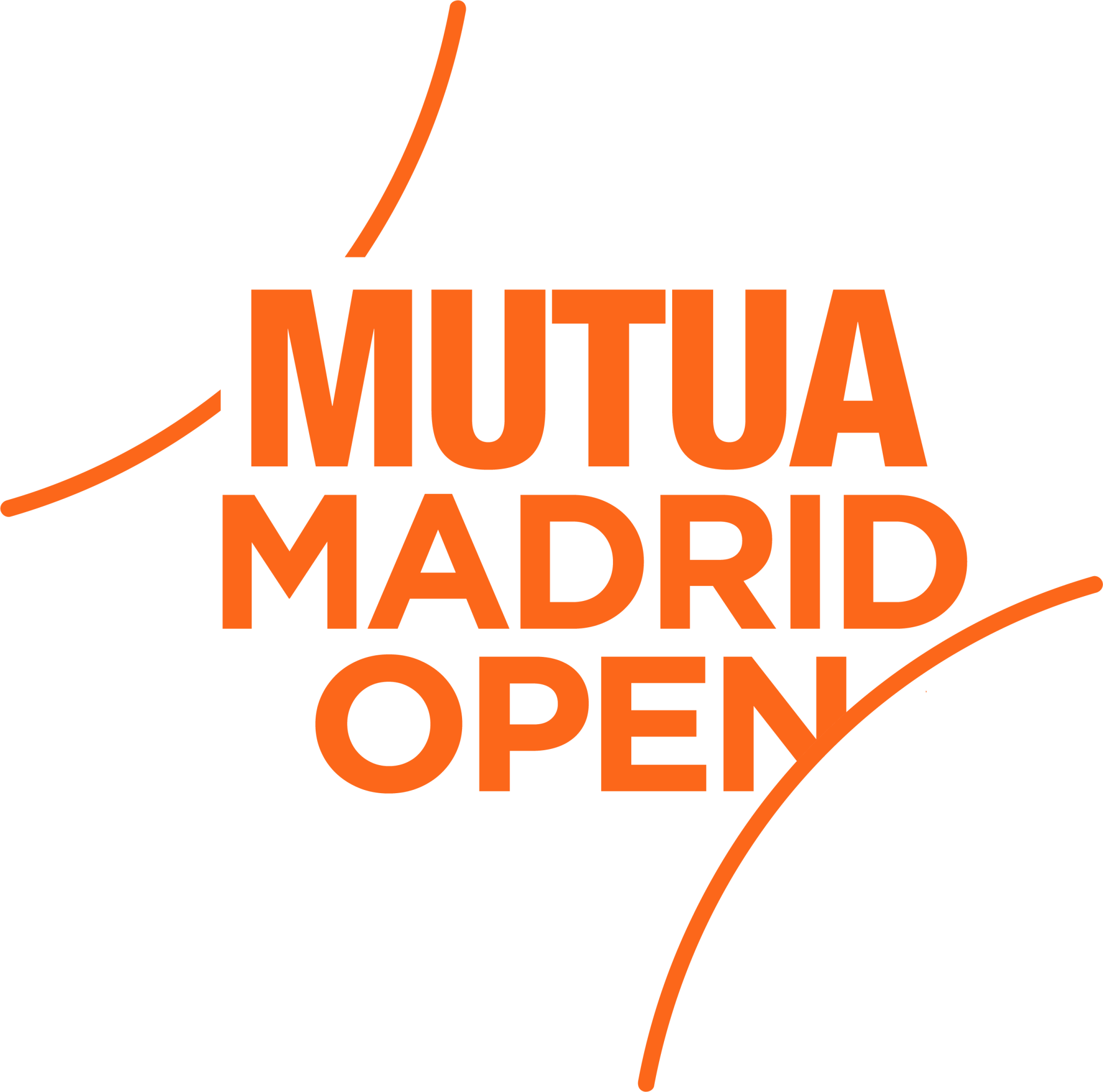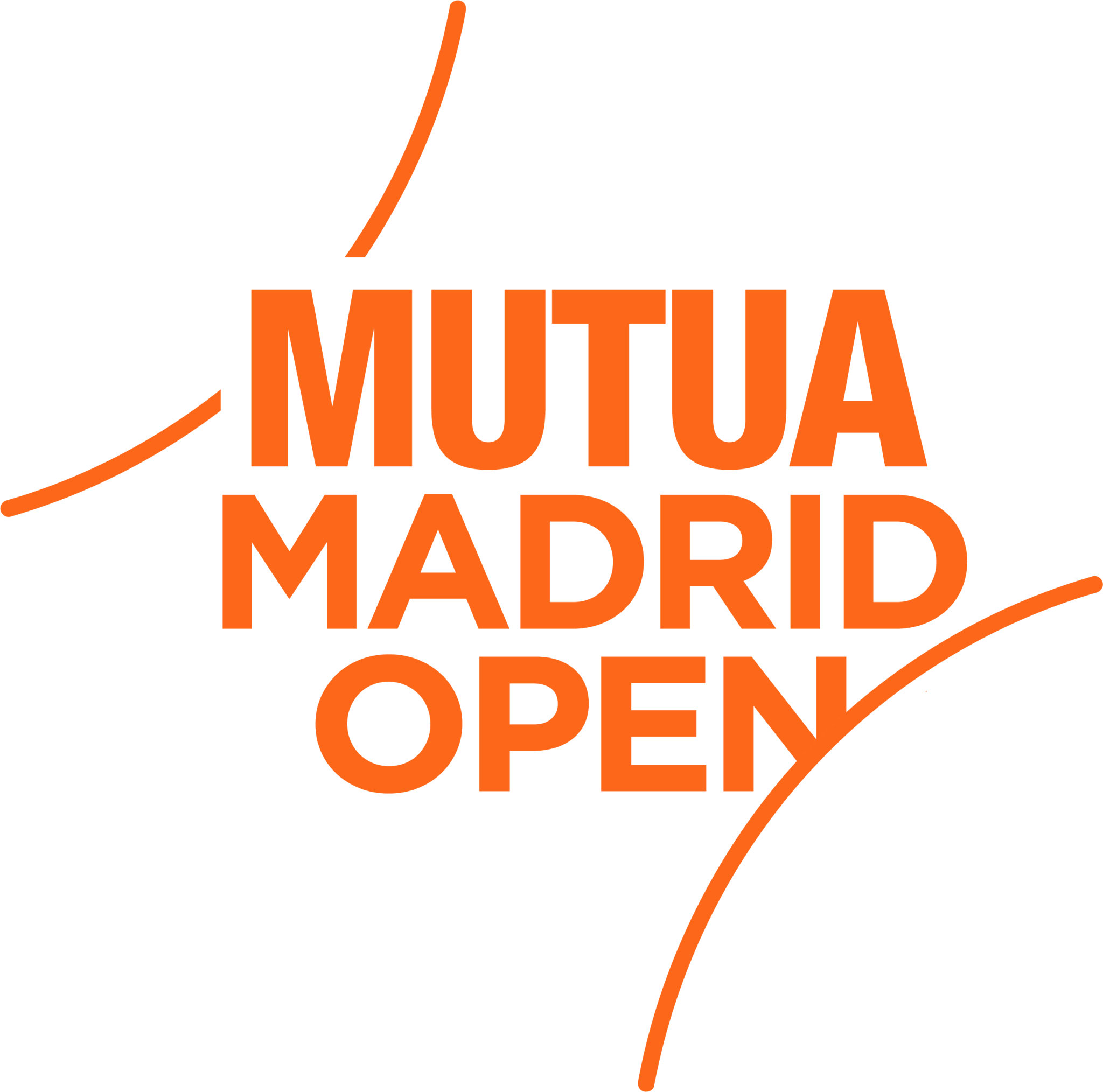Photos: Chema Rey
The Mutua Madrid Open trophy is redesigned every season. We spoke to its sculptor about the piece of art most coveted by everyone in the Caja Mágica. David Rodríguez tells us about Tyche, the title of the prize the winners will lift to the sky in the Manolo Santana Stadium.
How do you go about the challenge of creating the Mutua Madrid Open trophy all over again?
It’s the third year we’ve been doing the trophy and I love it. To me, it’s still an honour and a unique experience making the trophy. Last year was very good, I had great feedback on the trophy from the spectators. And like every year, here we are again presenting a new challenge.
What is the essence of the trophy?
This year, again, we have another trophy so that the Mutua Madrid Open can build a contemporary art collection linked to sport. Every year it has a title that comes from ancient Greece, because that’s the source of sport. This year the title of the sculpture is Tyche, the goddess of chance in ancient Greece. She was a deity who determined her own will. I thought there was a big link. There are a lot of parallels between focus and faith, and the belief that an elite athlete might have, in this case tennis players. It is often a factor in determining their fortune or success. I thought it was a value I hadn’t touched upon with the previous two.
What came first, the name or the sketch?
It’s not a linear process. We artists don’t work with linear processes. Looking at online hypertext I don’t think anyone thinks linearly. It kind of comes from reading, from whatever you’re working on… it comes and goes. I was clear on the concept I wanted of belief or touching upon the theme of fortune. In this case, it was the theme of the racket. In 2022 we worked more on the ball and this year we took inspiration from the racket. From an oval shape to be transformed, translating it into my language of plastic and a shape through what was, at first, an oval, which later evolved into a kind of oval, but interpreted.
Also with the volume of the plane together with the line I always work in, which is the hollow, an element that I always include in my structures. I built the plane through the line, making a parallel with the strings of the racket, such that they are different planes to which lines are added and they’ll produce a shadow that will be more related to the drawing, also inside the hollow depending on the light that will complete the drawing or the sculpture falls on them.
What materials is it made from?
I changed the working process and I worked with a 3D printer to get the shapes. But the final material will be aluminium. In the two previous years, the material was stainless steel, to relate it to the Caja Mágica. But this year it’s aluminium, because as it’s cast, which is also new, and it was too heavy. Aluminium is lighter. I also got rid of the base, which the previous two trophies had, but now we’ve taken it off. The construction process has changed. Previously it was by folding and welding, moulding the sheet. But now it’s by casting the face. It consists of melting the metal, or making it liquid at an extremely high temperature, then building a wax mould and casting it in parts.
What do you want people’s first impressions to be when they see the trophy?
More than an impression, I’d like there to be a connection. I think it will really connect with people, because of the oval elements and the string elements. Because it’s pretty direct in that regard, with sport and with tennis. And I think it will be more rotund as a sculpture because a cast piece has that sculptural rotundity that’s difficult to achieve with construction or with welding. It will have a rotund or stronger character.
Doesn’t it contain any elements of the Caja Mágica, or of the players or balls?
Not at all. Everything was inspired by the racket as a tool. But, from there, I started to play about by changing things to translate it into my language of plastic to build the sculpture.
What are its vital statistics?
The actual sculpture is 42 centimetres tall. It will have eroded silver aluminium to convert the light and to have an inflexion on the material itself. It’ll have a thread of copper, which is a thread of weld that is used to join it, but in this case it’ll be like a formal element with which I’m going to construct the planes. It will have four interior planes of copper, which will generate light and shadows and complete the picture of the projection of shadow in the sculpture’s hollow. Basically, there are two materials, aluminium and bronze.
Can we say this is a one-hundred percent Spanish trophy?
It’s made at a foundry that specialises in art called Capa, which has a long tradition in casting by international sculptors such as Toni Crabb. It’s a foundry that specialises in art and does pieces for international artists, but it is Spanish.
What do you think about the winners biting the trophy? Where will they do it?
In previous years it was difficult for them because of the weight, but this year the shape is more compact and it’ll be easier. It will be a piece that’s much easier to handle, to lift up and manoeuvre. That’s important. Above all, for the mayor [laughs].
What is your experience of tournaments like this?
I was someone who’d never been around tennis. To me it’s become a new passion and a new field of exploration. Every year, as I watch the matches, I always think of a concept. Two years ago it was the subject of competition, that battle between two people. I also thought about the percentage of concentration to achieve victory. Every year I think of something. Everyone is very happy there and it’s a very positive world. There’s a lot of passion and that translates into energy. Every year something new draws my attention.
How are sport and art brought together?
By exploring in depth what sport is. Analysing the vision of an artist and translating it into whatever a piece of art might be. I’m very grateful to the MMO for being able to work on this project where art and sport have a direct alliance. In that sense I think it’s really beautiful. Because it’s like when you join art and music, everything multiplies exponentially, the connection with the spectator, both for the athlete and for the fan or people who like art.
At what point do you show the trophy to the tournament?
I think about it for several months, doing drawings and thinking about the job until I develop a couple of models and I present it. But I have to say that they have full trust in me and they’ve always liked it. There have been no problems. They know that, in the end, the fewer ‘buts’ you put in the mind of an artist, the better the result will be. The fewer the limitations, the better.
Do you have feedback from any tennis players?
There was a very funny moment last year with Alcaraz, when I said to him ‘Carlitos, you’re starting to become an art collector because now you have two sculptures’. And I hope that this year, if possible, he can get the third.
You compared Rafa Nadal to Anthony Caro and Alcaraz to William Tucker, do you still think that?
I think he’s a very well-rounded person, and he has an incredible sporting legacy, also with his nuances, his lights and shadows. He has personality.
Did you take inspiration from any particular artist?
Not really, I’ve taken inspiration from shapes. The shape of the racket and, from there, I started to work to develop and transform what this is and make it into a sculpture.
How many trophies do you make?
Three trophies. One for the women’s winner, one for the men’s, and then one for the tournament. Because the Mutua Madrid Open is building a collection of art around the tournament.
How much might a trophy cost?
I don’t know, but they’re not cheap [laughs]. It depends on several factors, but it could be worth around 30,000 euros. It depends on the materials, how many there are, and then as time goes by, the value goes up on the markets.




